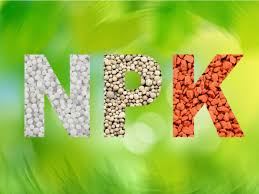Potassium (K) is an essential nutrient for plant growth. It’s classified as a macronutrient because plants take up large quantities of K during their life cycle.
Minnesota soils can supply some K for crop production, but when the supply from the soil isn’t adequate, a fertilizer program must supply the K.
Here, we’ll give you a basic understanding of K, including plants’ K nutrition, how it reacts in soils, its function in plants and its role in efficient crop production. In addition, you’ll find information about soil tests, K sources, predicting potash needs and effectively applying K to your fields.
NPK Compound Fertilizer Granular High Tower Granulation Tumbling Granulation
Role in plant growth
Potassium is associated with the movement of water, nutrients and carbohydrates in plant tissue. It’s involved with enzyme activation within the plant, which affects protein, starch and adenosine triphosphate (ATP) production. The production of ATP can regulate the rate of photosynthesis.
Potassium also helps regulate the opening and closing of the stomata, which regulates the exchange of water vapor, oxygen and carbon dioxide. If K is deficient or not supplied in adequate amounts, it stunts plant growth and reduces yield.
For perennial crops such as alfalfa, potassium plays a role in stand persistence through the winter. Other roles of K include:
-
Increases root growth and improves drought resistance.
-
Maintains turgor; reduces water loss and wilting.
-
Aids in photosynthesis and food formation.
-
Reduces respiration, preventing energy losses.
-
Enhances translocation of sugars and starch.
-
Produces grain rich in starch.
-
Increases plants’ protein content.
-
Builds cellulose and reduces lodging.
-
Helps retard crop diseases.
Potassium in soils
The total K content of soils frequently exceeds 20,000 ppm (parts per million). While the supply of total K in soils is quite large, relatively small amounts are available for plant growth at any one time. That’s because nearly all of this K is in the structural component of soil minerals and isn’t available for plant growth.
The amount of K supplied by soils varies due to large differences in soil parent materials and the effect weathering has on these materials. Therefore, the need for K in a fertilizer program varies across the United States.
Three forms of K – unavailable, slowly available or fixed and readily available or exchangeable – exist in an equilibrium in the soil system. Below, we describe these forms and their relationship to one another. Figure 1 also illustrates the general relationship among these forms.


